What Is AI Art? A Guide on How It Works and How to Create It.
Discover the history of artificial intelligence and art, learn how contemporary artists collaborate with AI, and get tools and tips to inspire your work
Recently, ChatGPT has taken the digital world by storm as this new AI tool is capable of generating creative texts, comprehensive summaries, code for a web page, or a script for social media — and it does it in a serious or casual tone, depending on your requests.
However, AI is also pushing the boundaries of how artists craft their creative pieces. Art made by artificial intelligence is complex and often controversial. While some artists celebrate the immense possibilities, others grapple with creative and ethical questions, but there’s no doubt it’s here to stay.
In 2018, Edmond de Belamy created by Obvious became the first AI painting to be auctioned at Christie’s, fetching $432,000. Some were amazed, many confused.
So, what exactly is AI Art? In short, it is artwork (visual, audio, or otherwise) generated by a machine learning process—that is, a machine has "learned" some information, and used it to produce a new AI-generated image. Humans may have collected the data, or written instructions for the machine to use, but the process of creation is left to the machine.
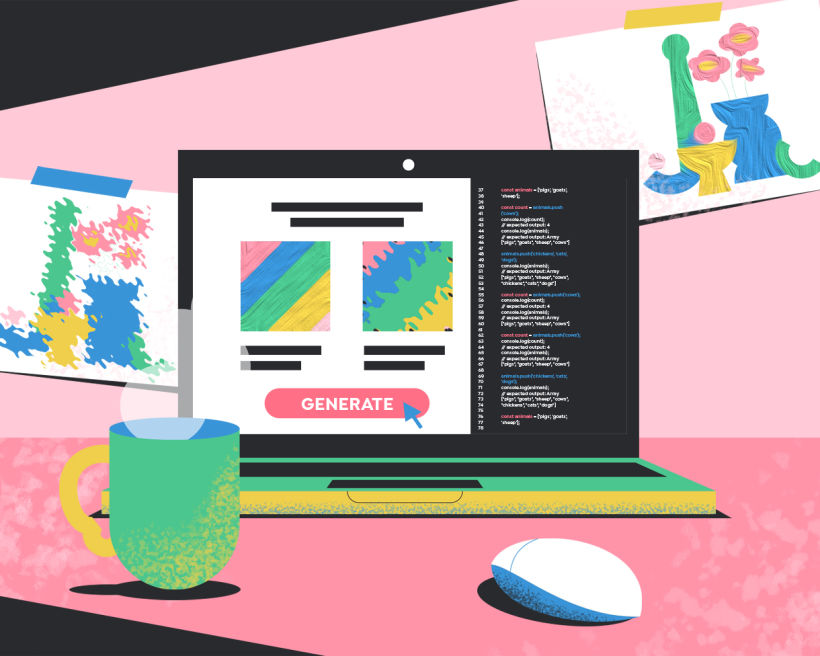
Imagine yourself standing in an art gallery, admiring an abstract print on the wall in front of you. It has bold colors and intentional-looking brush strokes. You wonder what it could mean. Then, you read the label on the wall—and learn the artwork was generated by an algorithm.
How do you feel? Maybe you’re frustrated that you were “fooled”. Maybe you worriedly remember that AI doomsday movie you watched. Or maybe you wonder how AI could augment your own creative process: could you make more art, explore new styles, and get access to tools you’d never dreamed of?
Here, we explore the history and context of this fast-growing medium. Then, we’ll learn how artists and computer scientists use algorithms to explore ideas. Finally, we’ll look at the tools, such as AI-Generated Art tools, bots, and autonomous artists, that may revolutionize your creative process.
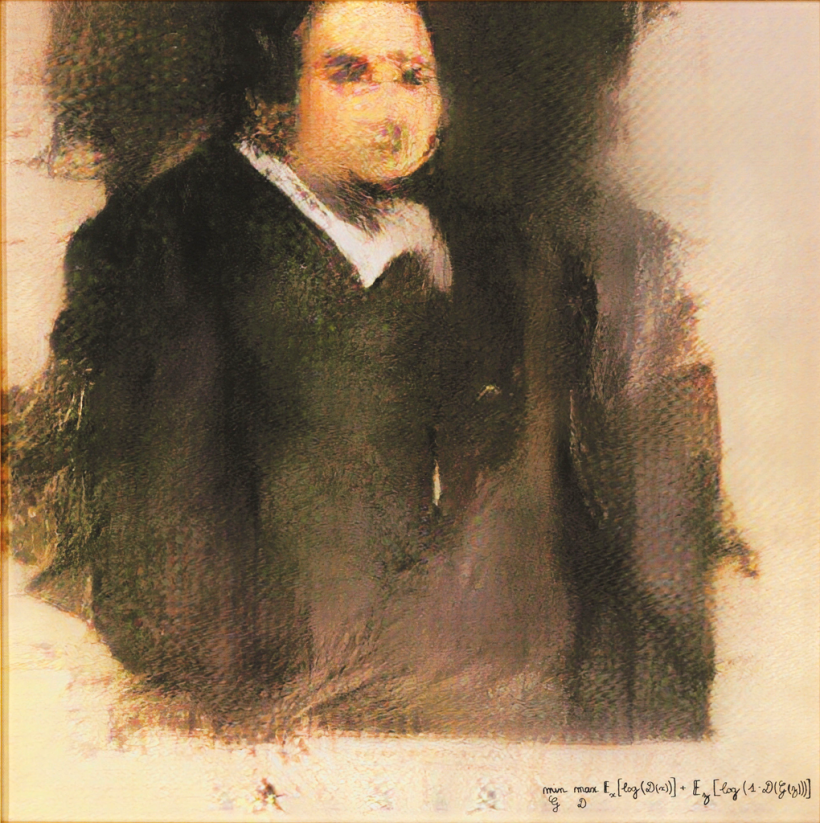
What is AI?
Artificial Intelligence is complex learning and thinking done by machines. Computer scientist John McCarthy coined the term in 1955. Like Alan Turing before, he knew computers could someday trick humans into thinking they were human, too.
What an AI does specifically depends on its algorithm (or list of rules for solving a problem). Typically, a machine learning system consists of a data bank, and a model that does something with the data (analyzes it, transforms it, etc). AI is everywhere, from Google Search to Netflix recommendations.
Cecilia Tham (@future_synthesist) is a designer, future synthesist, Domestika teacher, and founder of initiatives like allWomen, where women can upskill in data science and AI.
She explains the power of “extremely scalable technologies” to empower people and democratize tech so it becomes accessible to everyone. AI is a powerful tool for design and storytelling, as it “saves a lot of time and energy, the gruntwork of getting content made”.
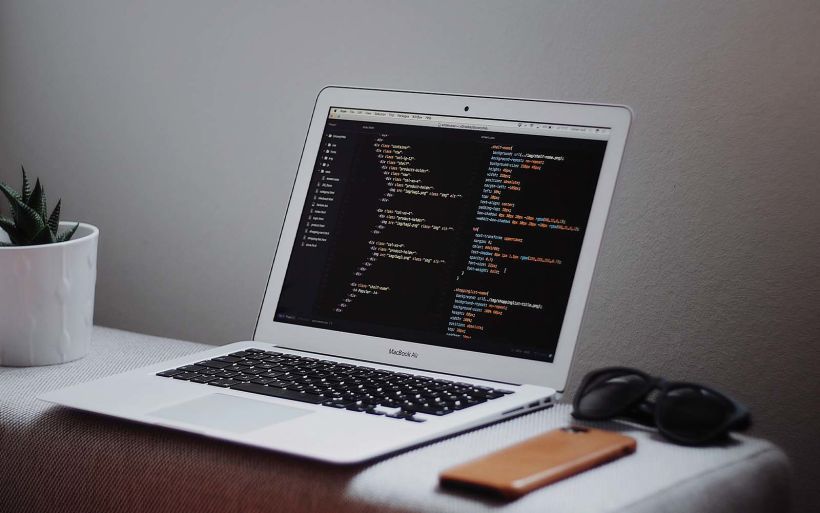
AI can hugely boost our creative work. Cecilia provides an advertising example: “You tell the AI, ‘I want to create a 50% discount off burgers for my customers, who are millennials’ and it’ll generate options—you click the options you like and train the algorithm.” AIs learn your style and preferences, and then work at huge scales very quickly. However, “the creativity is still done by people: they are the ones making the connections” or “synthesizing” ideas.
So AI art happens where the machine and human come together. But how exactly do these systems work?
What types of AI can “create” art?
Mostly emerging in the mid-2010s, the most common types of AI-generated art revolve around processing images, recognizing aspects like color, texture, and text. The models then edit existing images or generate new ones. Here are some key terms to know.
1. General Adversarial Network (GAN)
This system is made of two components. The generator tries to produce original images, while the discriminator contains a database of many images and "discriminates" whether the generator’s work is truly new. The two are in dialogue, the generator trying to outsmart the discriminator (hence “adversarial”, as in “enemies”).
One variation that became popular in 2022 is the VQGAN+CLIP system, which can produce original images from natural language prompts: i.e. you type in a descriptive sentence, and the AI tries to turn that into an accurate image. This is the case for AIs like OpenAI’s DALL-E and Imagen.

2. Convolutional neural networks (CNN)
Tools like Google’s DeepDream do what your brain sometimes does in the dark: seeing patterns, even faces, in the shadows. DeepDream finds and enhances patterns, producing psychedelic images. Unless you code it yourself, the patterns are dictated by what the creator trained the AI with. At one point, a system based on dog breeds went viral, with users making images filled with tiny dog faces (example pictured above).
3. Neural style transfer (NST)
Neural style transfer is basically image stylization: turning one input image into the style of another. You could enter a photo of yourself, and receive an output image of you in the style of Van Gogh.
But of course, for many artists, AI-generated images raise a lot of questions. Who owns the art, if it’s based on somebody else’s style? If we use the same tools, won’t all of our artwork look the same? Over the last decade, artists and computer scientists have explored these questions.
How AI has emerged to be creative
Ahmed Elgammal is a professor at the Department of Computer Science at Rutgers University, having founded an Art and AI Lab there. He and his team built AICAN (AI Creative Adversarial Network), a unique GAN which was trained on 100,000 images from five centuries of Western art.
It was then programmed to generate distinct and original new images, with influence from previous movements.
In an interview with Domestika, Elgammal explains that they created AICAN, “To show AI has creative ability,” and to demonstrate that, “AI can be used as a medium.”
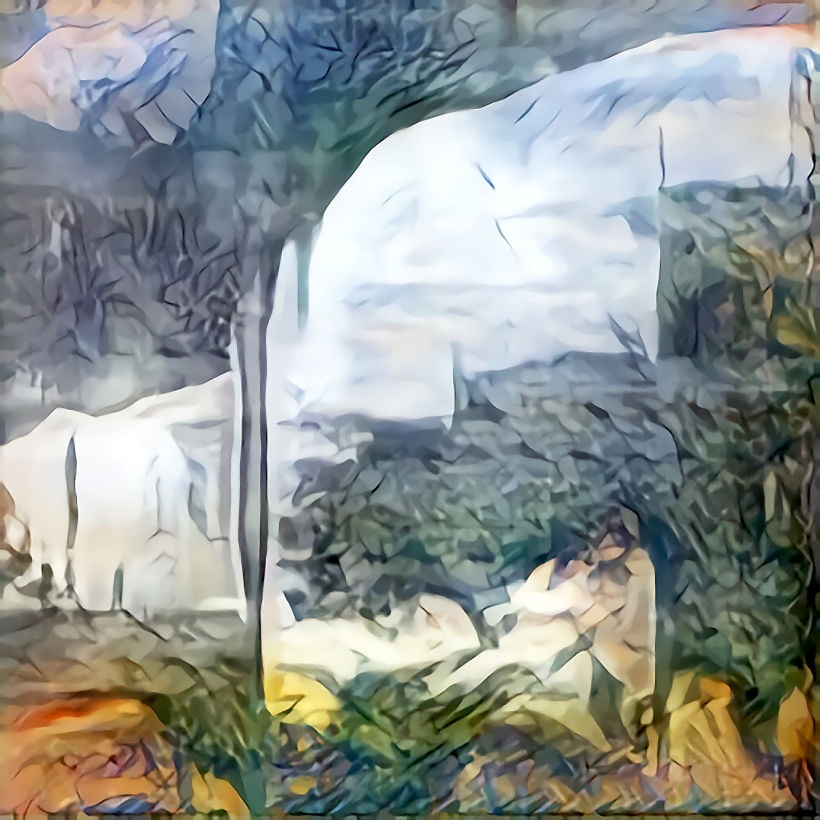
It worked. In 2017, a situation similar to the one described in the opening of this article actually happened: human subjects viewed AICAN’s works, mixed with abstract expressionist masters and contemporary artists’ works.
The Turing test succeeded: the audience couldn’t tell which artworks came from humans, and which from AICAN.

But the team learned something else, too. Elgammal's colleague and the CEO of Playform—an artist's tool developed from AICAN’s tech—Jennifer Chang tells Domestika: “A key question that kept coming up [at the gallery] was, ‘I’d like to speak to the artist.’ The curator decided they needed to have an artist present…so Ahmed stepped up. This showed that AI alone does not create art, because art is story. People wanted Ahmed to tell that story.”
What became clear via AICAN and similar projects is that the art—the originality—comes from a human making choices, expressing their unique story, and curating what the tool provides.
Elgammal points out that the same thing happened with photography: “In the nineteenth century, there was this concern that everybody was using the same camera, so how could one person’s work stand out? Was there an artistic personality in the photo that would make it ‘art’?”
Nowadays, photography stands as an art form in itself—is the same thing happening for AI?
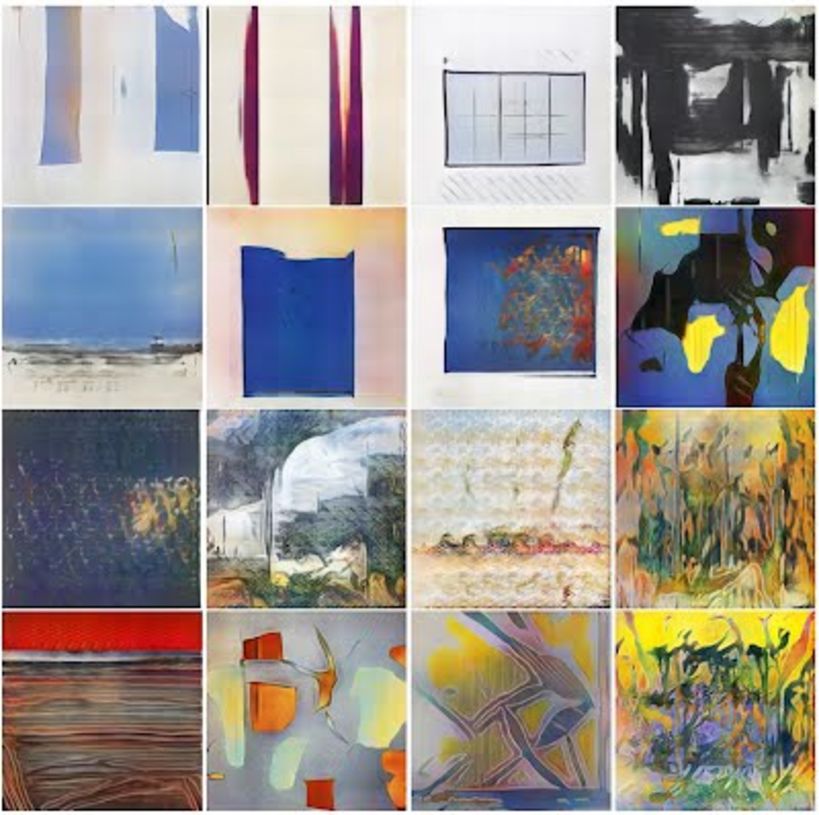
How contemporary artists use AI
AI is affecting contemporary art more and more. Whether it’s through a tool like Playform, or through an algorithm coded by the artist, here are some of the ways artists work with AI now.
1. Collaboration
Sougwen Chung is a multidisciplinary artist, combining hand-drawn marks with computer collaboration. Along with various generations of DOUG (Drawing Operations Unit Generation (X)), she has explored several potentials for human-machine collaboration.
Her mimicry project copied her gestures in real-time, producing artworks filled with ripples and echoes. The memory series involved a huge bank of her art, that DOUG learned from and used to make new works.

But AI goes beyond human-machine interaction: it can also augment human-human projects too. When introducing us to Playform, Chang notes, “We often see two artists putting their images together."
Another layer is introduced via the Art Mine—a section of the Playform site where artists list their models for potential buyers to generate and mint NFTs from. The layered collaboration makes for a huge range of outcomes.
Finally, the accessibility of AI tools unlocks a wider pool of artists—including those who may be unable to physically paint due to a disability, for example. As Chang noted, “creativity comes from the mind, not the hands.”

2. Feedback and learning
Another fascinating effect of working with AI is having a computer analyze your work. Chang explains that Playform users have reported identifying signature colors and gestures in their work through seeing it in the AI’s output.
“It’s giving you very unbiased feedback. It’s not like a friend who will just say ‘it’s amazing'. The AI is going to tell you what it sees," Elgammal adds, “it gives you a perspective outside of humanity’s. An uncanny, strange, surrealist look at your work.”
3. Scale
AI can create huge artworks quickly. Refik Anadol is a new media artist who took the notion of AI art literally: he once projected 45 terabytes of the LA Philharmonic's music and history data in visual form onto the Walt Disney Concert Hall over a week.
Turning vast quantities of data into nodes of color, he has filled enormous rooms and covered buildings with computer “dreams” and “data sculptures”. Tiny points of light, each representing a data point, move in surreal waves around the spaces they represent. AI allows something as inanimate as a building to express its history and existence.
And if creating larger collections of work is something you wish to pursue, an AI modeled on your original work will permit the generation of much more artwork than any human hand could produce in a lifetime.
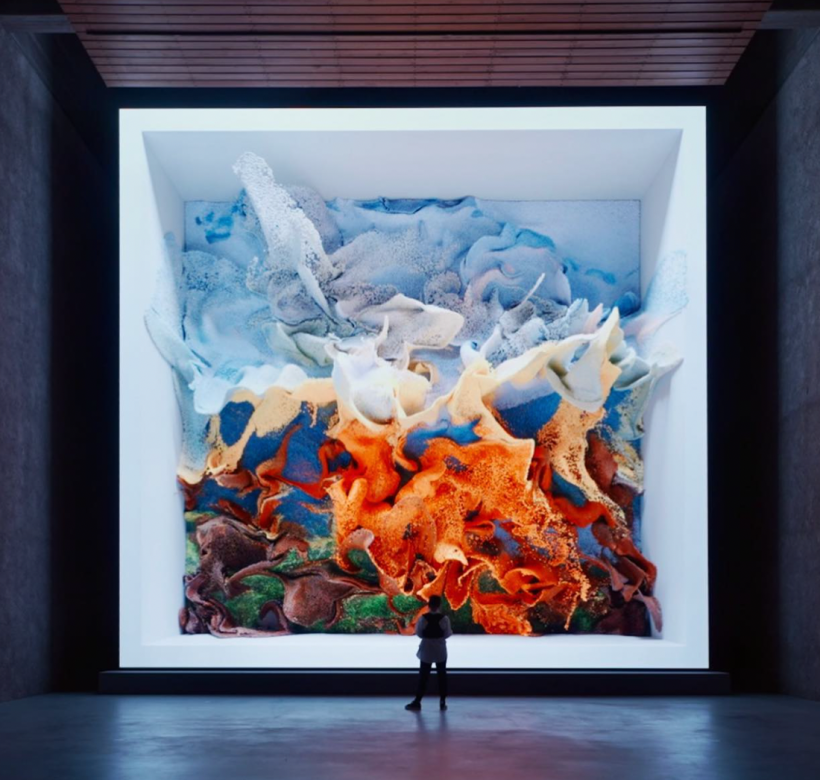
4. Market potential
Finally, AI opens doors into emerging art markets, expanding the avenues where artwork may be purchased and appreciated. From NFT marketplaces to traditional auction houses, there is a growing interest in the abstract creations generated by current AI models.
In fact, AI is ideally suited to the creation of art collections with blockchain technology—a model created from your work could generate a collection of hundreds or even thousands of unique artworks, which you can then curate in order to make an NFT collection (learn more about NFTs).
What ethical considerations are there?
We can’t talk about AI without considering the darker implications. Like any artistic medium, it has its potential for piracy, theft, and misuse, as well as social impacts.
Future synthesist and Domestika teacher Cecilia Tham notes, "One of the problems we’re living with nowadays is that we don’t have many tools, or education, around understanding the consequences of technology.”
Cecilia goes on to highlight that millions of people interact with this technology, but only a few make key decisions. “This is one of the biggest issues going into Web3 and the metaverse: there’s no interoperability and there’s no consensus on how things should be run.”
Another issue is the potential bias that may transfer from humans into the machines they build, which in turn may affect output. “Algorithmic diversity” is essential, to ensure an “integrated and fair” way of using data. Cecelia adds, “in a lot of cases, like self-driving cars, the technology is already available, but there are regulation concerns both over morality and concerns about biases."
For art, too, AI is a double-edged sword: democratization balanced with questions of responsibility. We need to find ways to overcome platform abuse and stealing, decide when and whether AIs can copyright work, and so on.
These are early days. As Cecilia concludes, “it’s still open for discussion: how we evolve into the future.” A great resource to dive deeper into the ethical questions can be found via AI Artists, where artists reflect on how we make sure “AI remains aligned with human values."
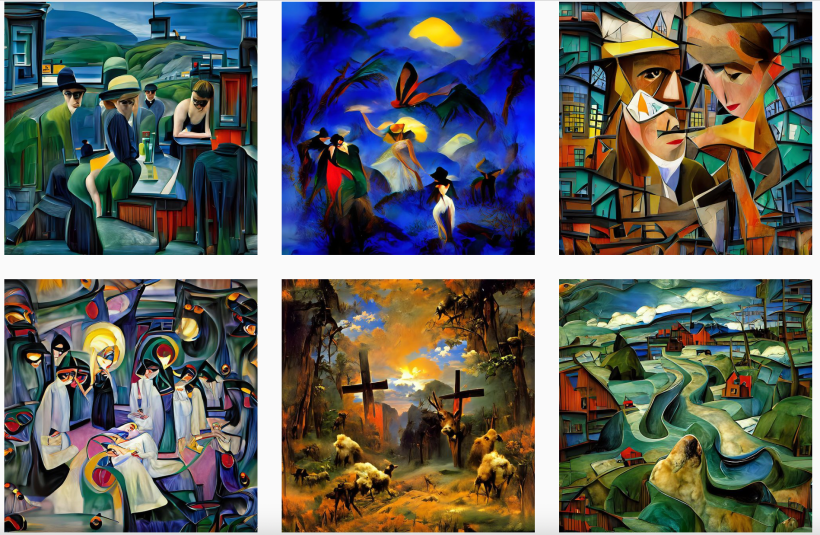
How to make AI art
Now you know the basics of AI art, why not join the community and create your own...
1. AI Artists resources: Over forty tools for visual art, music and more.
2. Deep Dream Generator: Process any image with a "deep style", "thin style’" or "deep dream", and make psychedelic versions of existing images.
3. Artbreeder: “Mix” images together using sliders that allow you to add features from one image to another.
4. Playform: Train your own GAN models based on your work with this tool made with AICAN tech. You can feed in 30+ images, and the AI will recognize color, composition, depth of field, and more to create new images. You can also list your model on the Art Mine.
5. Machine Learning for Art (ml4a): A textbook's worth of information about code and the underlying mechanisms of AI.
6. Craiyon: This text-to-image generator is based on the tech behind OpenAI's larger model, DALL-E, but is open-access and free to use. Simply type in a clear, descriptive phrase and the model will produce nine variations of its results. This tool has gone viral in 2022, with enthusiasts creating a range of art and, of course, memes.
7. Finally, don’t forget your friendly neighborhood coder! Speaking with someone with a knowledge of machine learning might open your eyes to new collaborations.
This article was originally published on March 22, 2022; updated 14 August, 2022
Ready to make the art of the future? Get inspired here...
New technology, as with new artistic movements, can take time to become accepted or to iron out issues. But as the possibilities of digital artwork expand ever wider, AI offers a pathway to understanding what it means to be human—in a decidedly non-human way.
- You can learn more about future technology, systems, and design with our innovation design and information design courses.
- If you want to create your own AI-generated art, learn how to use viral text-to-image AI art generators Craiyon (formerly DALL-E Mini), Deep Dream Generator, and NightCafe to create original imagery.
- Do you know what the metaverse is? It might be key to AI art and other digital assets becoming normalized.




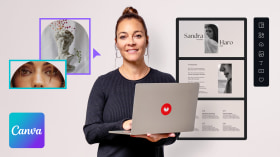
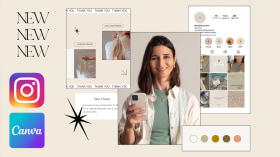

6 opmerkingen
yasserinnovation
Amazing, do you have any courses in domestika in AI Art?
rodlovell
Plus@yasserinnovation Perhaps the one that fits the most in this subject of artificial intelligence is this one here Designing Products of the Future. I think it is a matter of time for other courses to appear on this subject.
yasserinnovation
@artwithrod Thank you for your response 🙂
I already attended the Designing Products of the future ,and it is really amazing course.
nickdale77
So what is the point of all your other art courses on here? Won’t people just get lazy now? Why bother learning about colour and how to use sketch pens and paints etc if you can just type something into an AI?? Anyone can do that. who is an artist then? Nothing special…
waleed.sadiq
This blog post has truly inspired me. It is exceptionally well-written and filled with insightful information. I recently discovered an incredible AI art generator called "Imagine" that effortlessly transforms text prompts into beautiful artwork. If you're interested, you can explore their website by visiting this link Imagine Ai art generator
soartificial
Nice in depth article on AI generative tools. I have been using ai generative art tools for what seems forever (12months) this space has grown so rapidly in such little time. I have used top tools like Midjourney and dalle2 but personally my most favourite tool to us has to be stable diffusion it just works the way I want it too, I wrote more about it on my site So Artificial I go in depth with guides on how others can use it too. Have you tried to run stable diffusion locally? it's pretty fun to use.